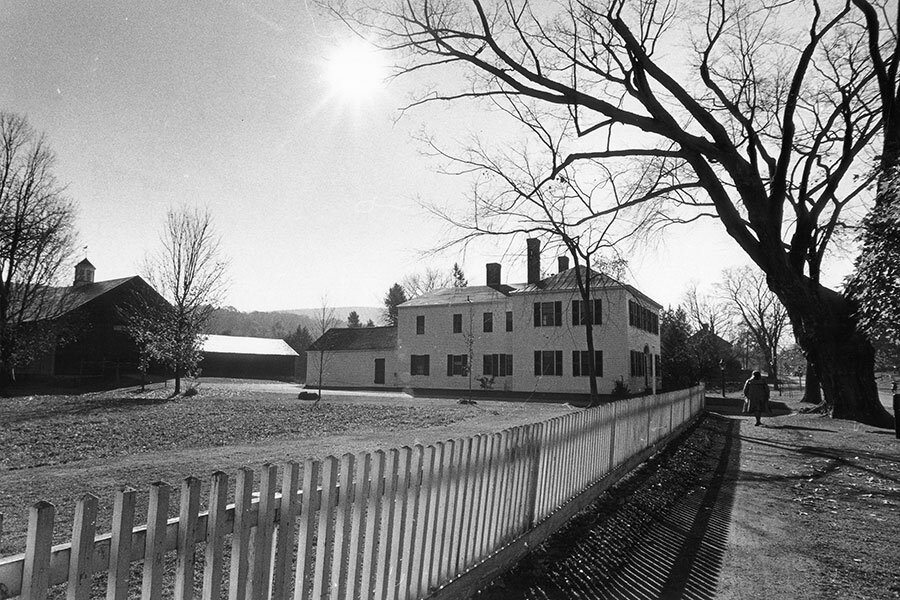Hope and the landscape of history
Loading...
Some mornings I walk the dogs in the fields by my house, a frosted labyrinth of brittle corn stalks and newly spread manure. The farmers are getting ready for spring, which they know will come after the winter, and so although nothing is growing now they are still tending and tilling and waving from their tractors, just with gloves.
They talk about this land with reverence. When we moved here, people told us that the Pioneer Valley of Massachusetts rivals the Nile delta for its richness. It has the same flooding and retracting river system, they told us, a river system that occasionally rises menacingly at the tree line and that not so many years ago swept up toward our house and left fish in the swimming pool.
The swelling and swallowing has left a breathtaking fertility, they say, an earth that sprouts any seed that finds its way into the soil.
I was skeptical at first. The comparison seemed a bit grand. But after the bounty of the garden we planted that first summer, after watching the tractors every morning, I am more inclined to believe. In a region of rocks, this dirt holds life.
It also holds death.
Centuries ago, settlers also recognized the potential here, in this narrow valley flanked by two mountain ranges. They huddled along what is now Main Street, behind wooden palisades, waiting for the darkness and snow to end so they could fulfill God’s covenant and plant.
They would have known the fields where my dogs now run. And my house, if it had existed, would have been the first stop in the raid.
It was colder that day, deeper into winter, when French soldiers and a mixed-tribe group of native fighters crossed the frozen Deerfield River and sacked the town before dawn. They had camped near the hill where my children now build forts and catch frogs with our school’s outdoor education program.
The attack more than three centuries ago was brutal, with the sort of terror we read about today in dispatches from more dangerous parts of the world – mutilations, murders, and homes burned. Dozens died in town, mostly children. The raiders took more than 100 captives and began marching them north, through the cold.
We tend to imagine the Colonial frontier in picture books, with turkeys and bonnets, feathers and merry Thanksgiving feasts. The reality was far more gritty and complicated.
My town’s 1704 raid was just one small outburst in a multinational conflict that included economic maneuverings, political intrigue, culture clashes, and religious wars. This little swath of Massachusetts, sparkling on this morning in frosted golden brown, was a global hot spot.
And, perhaps strangely, that gives me some peace.
I might know, thanks to the docents at the well-kept historical houses in town, which babies were hidden under beds and saved, and which children were killed because they couldn’t keep up on the march north. But I also know what grows here now.
I know that, on another freezing winter morning centuries after the attack, a 6-year-old would skip down the sidewalk to school, stop to gaze up at the big oak trees that line Main Street, and giggle at the squirrel making its nest. She would squeeze my hand. “Mama,” she would say, never imagining why one might be afraid here, “it’s just so beautiful.”
To me, this is hope. It is a whisper of faith that even in those heartbreakingly violent parts of our world, years from now there may be a child, eyes big with wonder, walking to school, blissfully unaware of the bloodshed buried deep beneath her sneakers. It is the conviction that spring follows winter, that this earth still holds life.








